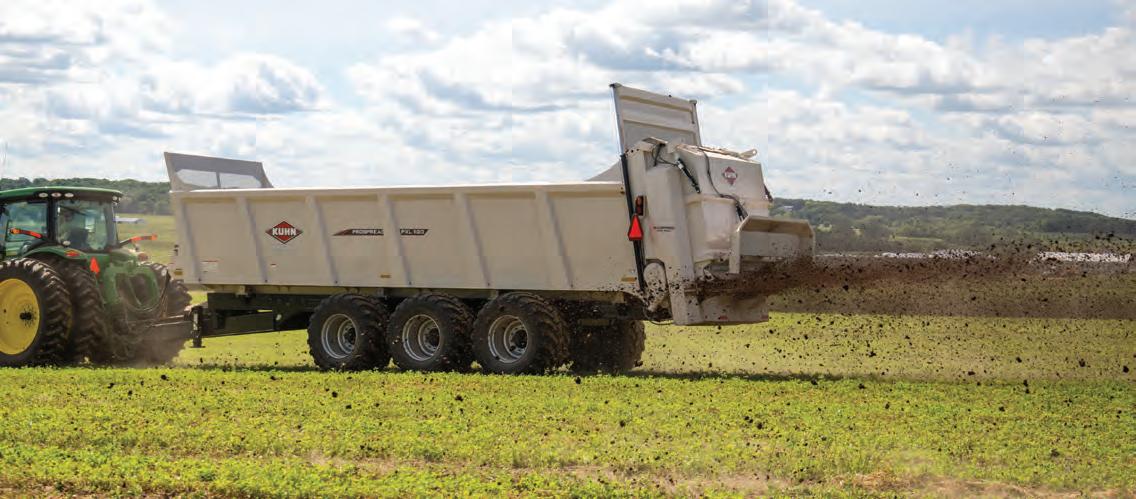
1 minute read
GET MORE FROM MANURE APPLICATIONS THIS FALL
s fertilizer prices climb and concerns about supply shortages loom, manure is an even more valuable nutrient source this fall. Iowa State University experts shared a few guidelines for making the most of postharvest manure applications in their Integrated Crop Management Blog. For starters, they said to watch the temperature — the soil temperature, that is. Application of liquid manure should be delayed until soil temperatures are below 50°F. That’s because warmer soils allow for the conversion to nitrates and raise the risk of nitrogen loss. Even with the use of a nitrification inhibitor, nitrate will leach with extra water moving through the soil profile.
While ammonium (about 80% of the total nitrogen in swine manure, for example) in the soil does not leach, it continues to convert into the nitrate form of nitrogen until soil temperatures are below freezing. At 50°F, the rate of nitrification is reduced to 20% of the maximum rate.
Advertisement
There’s a yield impact, too. In Iowa State University trials, a four-year average of corn yields showed a 38-bushel increase when manure was applied after soybean harvest in the early fall when soil was warm compared to holding off until soil temperatures were below 50°F.
The authors also noted the importance of equipment maintenance and calibration to get the most value from manure nutrients. Research from the university found the potential for a significant amount of variation in manure application along the toolbar due to a lack of maintenance. Air vents should be checked and cleared to avoid being plugged by dry manure. Hose loops and crimped hoses should be fixed. Filling the tank with water and turning on the pump with the injectors out of the ground is a way to assess uniform flow along the toolbar. ■






